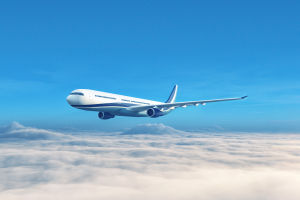
Have you ever looked up at the sky and thought, “What if we could fly that plane?” Well, we may not be pilots (yet), but with the right flying tips, we can get closer to the dream.
Whether we’re training on a flight simulator, preparing for a trial lesson, or just fascinated by aviation, here are some practical, easy-to-follow flying tips that will help us feel more confident in the cockpit.
Do a Proper Pre-Flight Check
Before we even start the engine, we need to make sure the plane is safe and ready. That means walking around the aircraft, checking for any damage or leaks, testing the control surfaces, and verifying that we have enough fuel and oil. This habit not only builds safety awareness but also helps us get familiar with how the aircraft works.
Understand the Flight Controls
The flight control stick or yoke may look intimidating, but it’s really just like a 3D version of a car’s steering wheel. We push forward to go down, pull back to climb, and turn left or right to bank the aircraft. Gentle and steady movements are the key. Treat the controls like a delicate instrument—avoid sudden movements.
Throttle and Fuel Mixture Know-How
Between the pilot seats, we’ll usually find a black lever for throttle and a red one for fuel mixture. The throttle controls engine power, while the mixture lever adjusts how much fuel gets mixed with the air. In most small aircraft, pushing them forward gives more power or fuel, while pulling back reduces it. Learning how to balance both helps us fly smoother and save fuel.
Meet the Six Essential Flight Instruments
Getting familiar with the six basic instruments will really boost our confidence:
· Airspeed Indicator – Tells us how fast we’re flying.
· Attitude Indicator – Shows if the nose is up, down, or level.
· Altimeter – Measures our height above sea level.
· Turn Coordinator – Helps us make smooth turns.
· Heading Indicator – Like a compass, but more stable.
· Vertical Speed Indicator (VSI) – Shows if we’re climbing or descending.
Keeping an eye on these instruments helps us stay in control, especially when visibility is low.
Master the Takeoff and Climb
Once we’re cleared for takeoff, it’s time to gently push the throttle in. As the plane gains speed, we keep it aligned with the runway using the rudder pedals. At around 55–65 knots (for most small planes), we softly pull back on the yoke and the plane lifts off. Remember to climb steadily and retract the flaps and gear once we reach a safe altitude.
Stay Balanced While Cruising
During cruise, we aim to keep the aircraft level and at a steady speed. This usually means adjusting the throttle to about 75% power and trimming the elevator so we’re not fighting the controls. We also make tiny adjustments using the rudder to stay coordinated and avoid side-slipping.
Handling Turbulence Like a Pro
Turbulence can feel scary, but it’s usually no big deal. The trick is to avoid overcorrecting. Just hold the controls lightly and let the plane ride it out. If it gets bumpy, we slow down a bit to reduce stress on the wings. Staying calm and focused makes all the difference.
Planning a Smooth Landing
Landings are where practice really pays off. As we approach the runway, we reduce power, lower the flaps, and aim for a smooth glide path. Using a combination of throttle and yoke, we control our speed and descent angle. Just before touchdown, we pull back gently to level off and let the main wheels touch down first. Brake softly and exit the runway as soon as it’s safe.
Learn from Every Flight
Whether it's a 10-minute hop or a full cross-country trip, we should always review what went well and what we can improve. Were we coordinated in our turns? Did we maintain altitude? Reflecting like this makes us better pilots every time we fly.
You’re Closer Than You Think!
Flying may seem complicated at first, but with every tip and practice run, we get one step closer to feeling at home in the sky. So Lykkers, what do you think—ready to take off into the clouds with us one day? Keep dreaming, keep learning, and maybe, just maybe, we’ll all be pilots sooner than we think!
A Day in the Life as an Airline Pilot | Flight From Cairo on Boeing 737NG
Video by Pilot Blog


